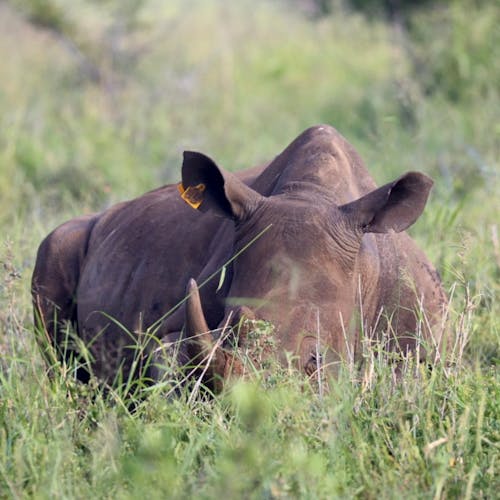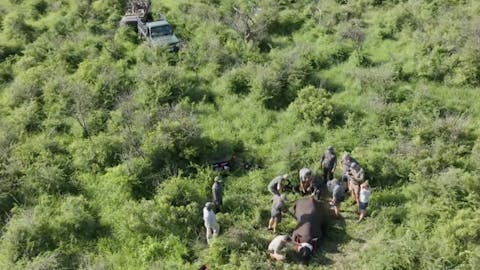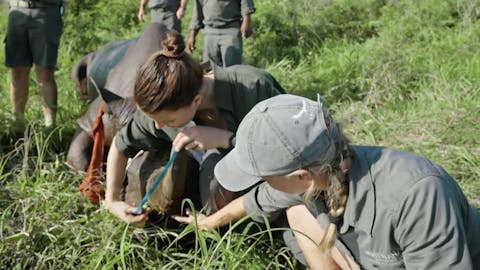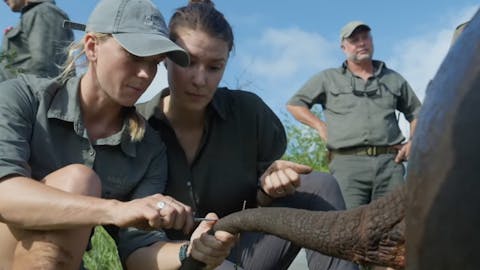
From Germany to South Africa: Phinda’s success on Terra X
Germany’s renowned documentary series, Terra X: Faszination Erde (Fascination Earth) recently featured our partner, Phinda Private Game Reserve, bringing its conservation success to a global audience. With around four million viewers per episode, this ZDF production highlights the incredible impact of conservation efforts worldwide. As one of Germany’s top broadcasters, ZDF is known for its high-quality documentaries on nature, science and history, and most of the Faszination Erde episodes are available online with English subtitles!
South Africa - the contested paradise
Faszination Erde is hosted by Hannah Emde, a veterinarian and conservationist who has travelled from Peru to Thailand and Egypt to Canada, exploring the dynamic relationship between humans and wildlife and how conservation efforts allow them to successfully co-exist.
During the South Africa special, Hannah set out to discover, how much nature is left? With a growing human population, rapid urbanisation and expanding agriculture, South Africa’s wilderness areas are becoming increasingly fragmented. This episode takes watchers on a journey through the country’s conservation story, where Phinda is a key example of how re-wilding, strategic planning, and wildlife management can restore a once-depleted landscape to its former flourishing ecosystem.
The history of Phinda: a landscape reclaimed by nature
The transformation of Phinda from a monoculture farmland to a biodiversity hotspot is an incredible success story!
Before 1991, most of what is now the Munywana Conservancy (where Phinda is located) consisted of small-scale farms focused on cattle, sisal, pineapple and cotton production. During this time biodiversity in the area was quite limited, with the most common wildlife encounters being various small antelope species and the occasional nomadic leopard.
In 1991, Phinda Private Game Reserve was established, bringing together various pieces of segregated farmland to create a larger protected area. A perimeter fence was erected and an extensive bush-clearing program was implemented to restore the landscape to its original state, based on aerial photographs taken in the 1960s.
Soon after this, large numbers of animals were translocated to the reserve to bring biodiversity back to the region. Today, Phinda is home to the iconic Big Five and countless other species. They are so successful with their wildlife management that they have been able to repopulate other areas of Africa with a variety of wildlife! One of Phinda’s most significant repopulations was the translocation of 30 rhinos from the reserve to the Akagera National Park in Rwanda.
Phinda is a true demonstration of how nature can reclaim its place with the correct long-term conservation strategies.
Why wildlife management is essential
In the Faszination Erde episode featuring Phinda, the show sheds light on the ongoing challenges faced by conservationists in South Africa. During a conversation with Kerrin Allen, an Ecological Monitor at Phinda, host Hannah discusses how the fragmentation of South Africa’s national parks and game reserves is harming wildlife due to the loss of their natural migration routes, which in turn is causing genetic diversity of populations to fall. In unfragmented wilderness, animals would be able to move freely between areas, ensuring that ecosystems stay healthy and balanced. As more human settlements are established and natural corridors are cut off, conservationists must actively manage populations through translocations to prevent inbreeding and ensure healthy wildlife populations.
Another critical threat facing much of South Africa’s wildlife is poaching. Many animals have attributes, such as skin, scales, horns or tails that are very valuable in the illegal wildlife trade. Hannah highlights how poaching is detrimental to rhino populations. Although their horns are made of keratin, the same substance as human hair and fingernails, it is valued between $60,000-$200,000 USD (Wildlife Justice Commission). This has led to relentless poaching across Africa, pushing rhino populations to near extinction.
Antipoaching efforts: the rhino horn trimming process
As part of their anti-poaching scheme, Phinda has adopted rhino horn trimming. This, combined with other management strategies, helps to deter poachers. Hannah and the Terra X team were involved in a horn trimming during their visit.
The process began with the veterinarian darting the rhino from a helicopter to safely sedate the animal. Once the rhino was immobilised, Hannah and the team stepped in to measure the horn and take samples of blood and hair from the rhino. This information is stored in a database to ensure that the rhino horn is trimmed again in two to three years and to track the genetics of the rhinos in the reserve, helping to prevent inbreeding.
Hannah also helped to keep the rhino cool whilst it was sedated by pouring water over its body. The rhino horn was then trimmed using a chainsaw, approximately four finger widths above the base as the vet explained that this area is free of blood vessels and nerves. Hannah then assisted by sanding the edges to prevent sharp fragments from causing injury to other animals. The horn was then taken and stored in a secure location to prevent it from ever reaching the illegal wildlife trade.
Horn trimming, alongside other anti-poaching efforts at Phinda, has been hugely successful at protecting these magnificent creatures!



